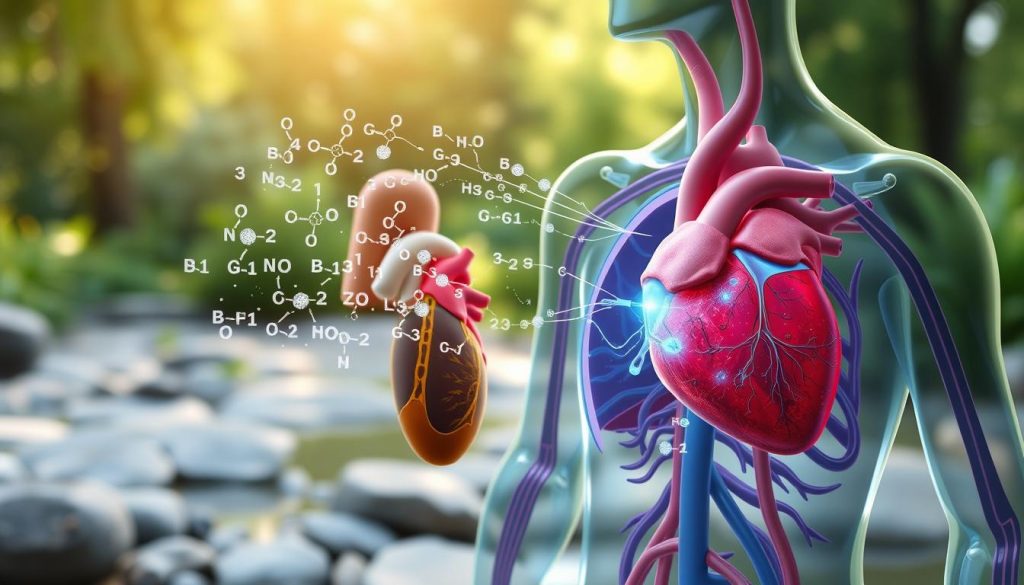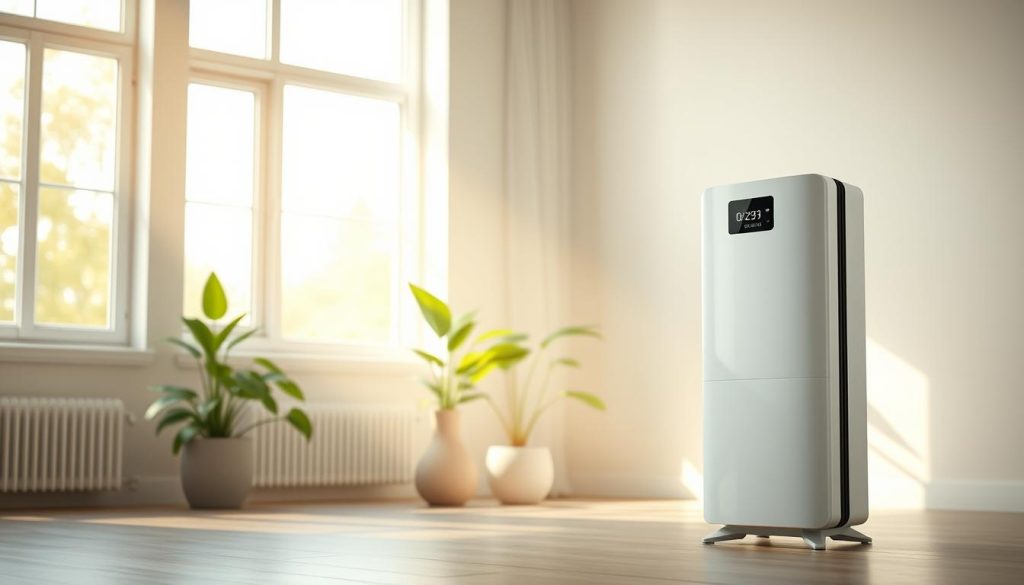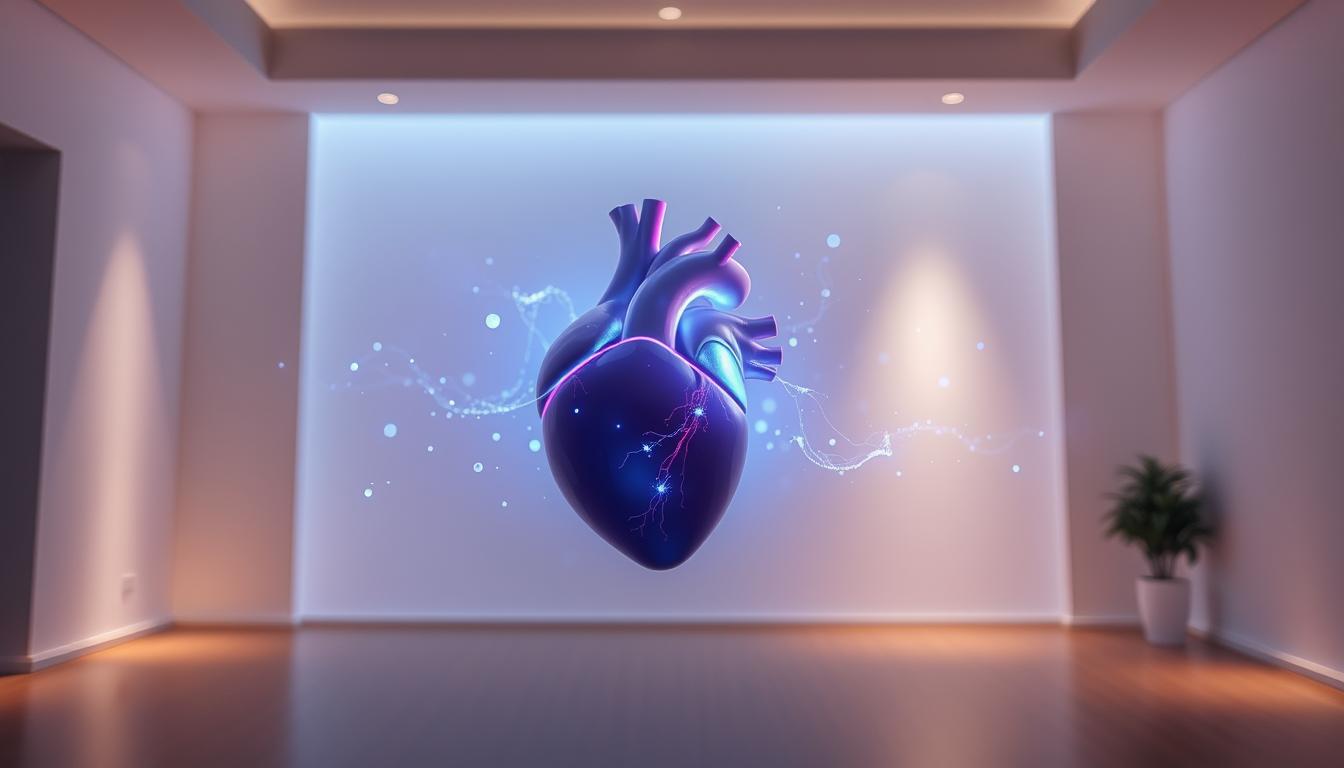Did you know that invisible molecules in the air could hold the key to better heart health? Negative ions, often found in abundance near waterfalls, beaches, and after thunderstorms, may offer surprising benefits for your cardiovascular system. As we breathe in air enriched with these tiny charged particles, our bodies respond in fascinating ways that can contribute to improved blood pressure regulation and overall cardiac wellness.
Exploring the connection between negative ions and cardiovascular health opens up a world of possibilities for those seeking natural ways to support their hearts. By understanding the science behind these atmospheric wonders and learning how to harness their potential, you can take proactive steps towards maintaining a healthy heart and reducing your risk factors for cardiovascular disease.
In this article, we’ll dive deep into the realm of negative ions, uncovering their sources, mechanisms of action, and the compelling research that links them to better cardiovascular outcomes. Get ready to discover how these unseen allies in the air around us could be the key to unlocking a healthier, more resilient heart.
What Are Negative Ions and How Do They Affect Your Health?
Negative ions are tiny, electrically charged particles that are naturally present in the air. These invisible molecules have gained attention for their potential health benefits, particularly in relation to cardiovascular well-being. To understand how negative ions can impact our health, it’s essential to explore the science behind them and their natural sources.
Understanding the Science Behind Negative Ions
Negative ions are created when an electron is added to an atom or molecule, giving it a negative charge. This process often occurs in nature, particularly around moving water or in forests. When water molecules collide, such as in waterfalls or crashing waves, they break apart and gain a negative electron charge, forming negative ions. Similarly, plants and trees release negative ions during photosynthesis.

The concentration of negative ions in the air varies depending on the environment. Here’s a table comparing the approximate number of negative ions per cubic centimeter (ions/cm³) in different settings:
| Environment | Negative Ions (ions/cm³) |
|---|---|
| Waterfalls and beaches | 50,000 – 100,000 |
| Mountains and forests | 5,000 – 50,000 |
| City parks | 500 – 1,000 |
| Indoor urban environments | 100 – 500 |
The Natural Sources of Negative Ions
Nature provides an abundance of negative ions, with some environments boasting higher concentrations than others. Waterfalls, beaches, and forests are among the top sources of these beneficial air molecules. The pounding surf, cascading waterfalls, and lush vegetation all contribute to the high levels of negative ions found in these settings.
Spending time in nature, especially near moving water or in dense forests, allows you to immerse yourself in an atmosphere rich in negative ions. This exposure may help to counteract the effects of positive ions, which are often prevalent in indoor environments due to electronic devices and air pollution.
The Link Between Negative Ions and Cardiovascular Health
Numerous studies have explored the potential benefits of negative ions for cardiovascular health. The scientific evidence suggests that exposure to negative ions may help reduce the risk of heart disease by combating inflammation and managing stress levels.
Research Studies on Negative Ions and Heart Health
One study published in the Journal of Alternative and Complementary Medicine found that negative ion therapy significantly reduced blood pressure and heart rate in patients with hypertension. The researchers concluded that negative ions may have a beneficial effect on cardiovascular function.

Another study conducted by the University of California, Irvine, discovered that exposure to negative ions decreased the production of stress hormones, such as cortisol and adrenaline. Since chronic stress is a known risk factor for heart disease, managing stress levels through negative ion exposure could indirectly support cardiovascular health.
How Negative Ions Can Help Reduce Cardiovascular Risk Factors
Negative ions have been shown to influence several key risk factors for heart disease, including:
- Reducing inflammation: Chronic inflammation is linked to the development of atherosclerosis and other cardiovascular issues. Negative ions may help lower inflammation markers in the body.
- Lowering blood pressure: High blood pressure puts extra strain on the heart and blood vessels. As mentioned earlier, negative ion therapy has been found to reduce blood pressure in hypertensive individuals.
- Improving stress management: Psychological stress can contribute to heart disease by increasing inflammation and affecting lifestyle choices. Negative ions promote relaxation and stress relief, potentially mitigating these risks.
The following table summarizes the potential cardiovascular benefits of negative ions:
| Cardiovascular Risk Factor | Effect of Negative Ions |
|---|---|
| Inflammation | Reduces inflammatory markers |
| Blood Pressure | Lowers blood pressure in hypertensive individuals |
| Stress | Promotes relaxation and stress relief |
While more research is needed to fully understand the mechanisms behind these effects, the existing scientific evidence suggests that negative ions may play a valuable role in heart disease prevention and overall cardiovascular health.
Negative Ions and Blood Pressure Regulation
High blood pressure, or hypertension, is a common health concern that can lead to serious cardiovascular issues if left untreated. Interestingly, exposure to negative ions has been shown to help regulate blood pressure levels, offering a natural and effective way to support cardiovascular health.
Negative ions promote relaxation and stress relief, which are crucial factors in maintaining healthy blood pressure. When we experience stress, our body releases hormones that cause blood vessels to constrict, leading to increased blood pressure. By inhaling negative ions, we can help counteract this effect and encourage blood vessel dilation, allowing for improved blood flow and lower blood pressure.

Several studies have investigated the link between negative ions and blood pressure regulation. One notable study conducted by researchers at the University of California, Irvine, found that exposure to negative ions significantly reduced blood pressure in individuals with hypertension. The participants experienced a decrease in both systolic and diastolic blood pressure after just 30 minutes of negative ion exposure.
| Blood Pressure Category | Systolic (mmHg) | Diastolic (mmHg) |
|---|---|---|
| Normal | <120 | <80 |
| Elevated | 120-129 | <80 |
| Stage 1 Hypertension | 130-139 | 80-89 |
| Stage 2 Hypertension | ≥140 | ≥90 |
The table above shows the different categories of blood pressure levels, as defined by the American Heart Association. By incorporating negative ions into your daily life, you can work towards maintaining a healthy blood pressure level and reducing your risk of hypertension-related complications.
Incorporating Negative Ions into Your Daily Life for Better Cardiovascular Health
To harness the cardiovascular benefits of negative ions, it’s essential to incorporate them into your daily life. Fortunately, there are several natural ways to increase your exposure to these health-promoting molecules, as well as innovative products that can help you create an indoor environment rich in negative ions.
Embrace Outdoor Activities
One of the simplest and most enjoyable ways to boost your exposure to negative ions is by engaging in outdoor activities. Spending time in nature, particularly near waterfalls, beaches, or forests, can significantly increase your intake of these beneficial ions. Consider incorporating the following activities into your routine:
- Hiking or walking in natural settings
- Practicing outdoor yoga or meditation
- Gardening or working with plants
- Participating in water sports, such as swimming or surfing
Utilize Indoor Air Purifiers
For those times when you can’t be outdoors, using an indoor air purifier that generates negative ions can help create a healthier indoor environment. These devices not only remove pollutants and allergens from the air but also release negative ions, which can contribute to improved cardiovascular health. When choosing an air purifier, look for models that specifically mention negative ion generation.

Surround Yourself with Houseplants
Houseplants are not only aesthetically pleasing but also natural sources of negative ions. Certain plants, such as peace lilies, snake plants, and Boston ferns, are particularly effective at releasing negative ions and purifying the air. By strategically placing these plants throughout your home or office, you can create an environment that supports your cardiovascular well-being.
Incorporate Himalayan Salt Lamps
Himalayan salt lamps are another popular way to introduce negative ions into your indoor space. These lamps are made from pink Himalayan salt crystals, which naturally emit negative ions when heated. The soft, warm glow of these lamps can also create a calming atmosphere, promoting relaxation and stress reduction, which are essential for maintaining a healthy heart.
By incorporating these natural methods and innovative products into your daily life, you can significantly increase your exposure to negative ions and, in turn, support your cardiovascular health. Remember, small changes can lead to significant improvements in your overall well-being, so start exploring ways to bring more negative ions into your environment today.
Harnessing the Power of Negative Ions and Cardiovascular Health for Optimal Wellness
To truly optimize your cardiovascular health and overall well-being, it’s essential to take a holistic approach that encompasses various lifestyle changes and heart-healthy habits. Incorporating negative ions into your daily life is one powerful strategy to support your heart and reduce the risk of cardiovascular disease.
By making simple adjustments to your environment and routines, you can harness the benefits of negative ions for improved cardiovascular function. Whether it’s spending more time in nature, using a negative ion generator at home, or creating an indoor space that promotes a high concentration of these beneficial particles, every step you take can contribute to a healthier heart.
Remember, achieving optimal wellness is a journey that requires commitment and consistency. By combining the power of negative ions with other positive lifestyle changes, such as regular exercise, a balanced diet, stress management, and quality sleep, you can pave the way for a stronger, more resilient cardiovascular system. Embrace this holistic approach and take charge of your heart health today for a brighter, healthier tomorrow.

